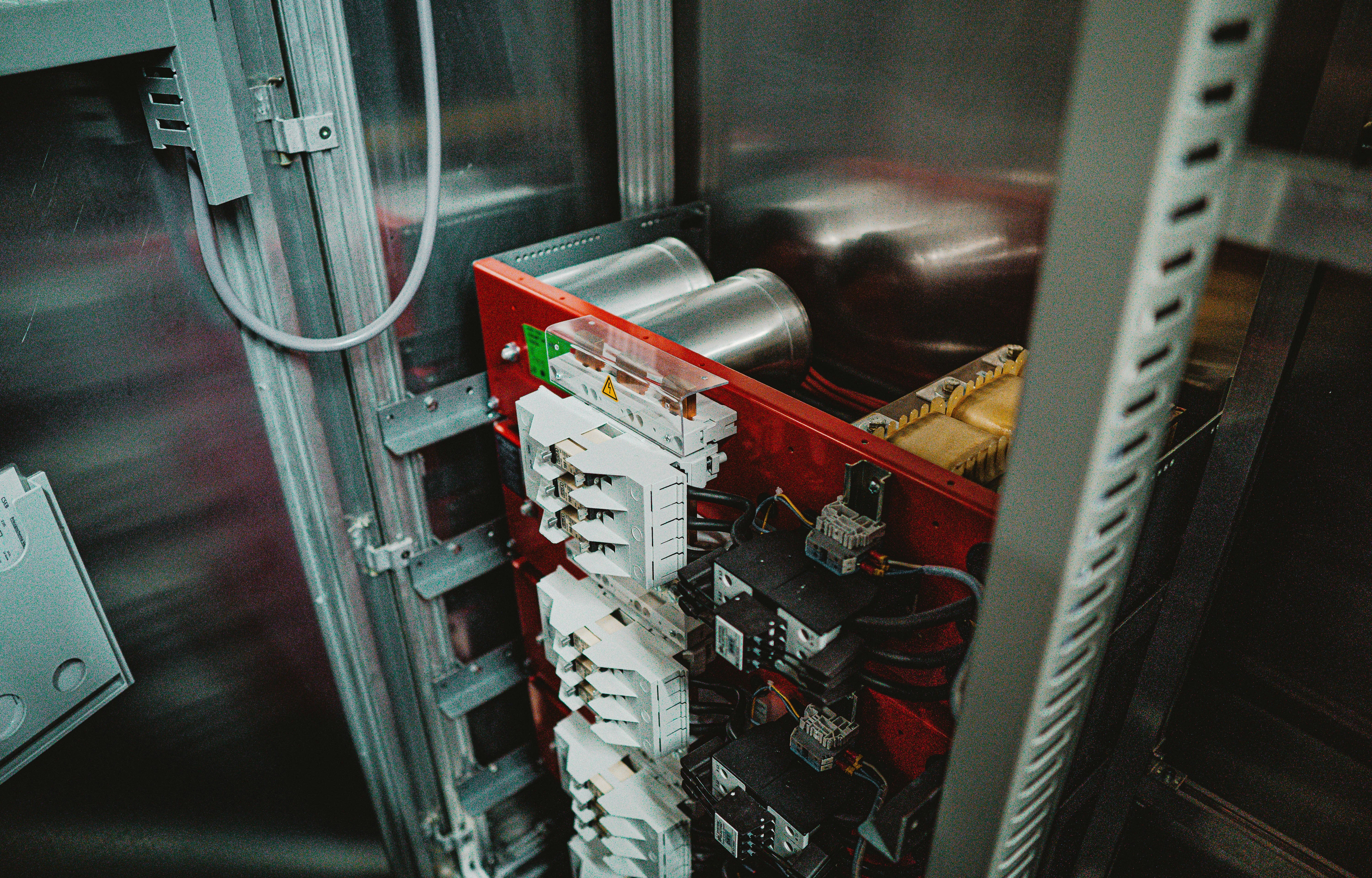Introduction to Stud Finders
Stud finders are essential tools for individuals engaging in DIY projects, home renovations, or professional construction work. These devices assist users in locating wooden or metal studs behind walls, ceilings, and floors, which is crucial for securely mounting shelves, televisions, and other fixtures. Without a stud finder, it can be challenging to identify the best spots for screws or anchors, leading to incomplete projects or unsightly damage to walls.
The importance of stud finders lies in their ability to ensure both safety and efficiency in home improvement tasks. By accurately locating studs, these tools minimize the risk of hitting electrical wires or plumbing and maximize the strength of any installations. Understanding how different stud finders operate can greatly enhance a user’s experience and effectiveness in their projects.
There are several types of stud finders available in the market today. Magnetic stud finders utilize magnets to detect metal fasteners or screws embedded in the wall, making them a straightforward and cost-effective option. They are often lightweight and easy to use, although they may not be as precise as other types.
Electronic stud finders represent another category; these devices use advanced sensors to identify the density of materials behind the wall. This approach typically provides a more accurate reading of stud locations and can detect both wood and metal studs effectively. Some electronic models are equipped with additional features, such as the ability to identify live wires, which adds an element of safety.
Multi-scanner stud finders combine both magnetic and electronic functions, providing users with versatile options to detect not only studs but also additional elements like pipes and wires. With a variety of styles and price ranges available, it is essential for DIY enthusiasts and professionals alike to choose the right stud finder to suit their specific needs.
Detailed Reviews of Each Stud Finder
In the competitive landscape of stud finders, it is essential to thoroughly evaluate each product to determine which best meets consumer demands. Below, we review five distinct stud finder brands, focusing on their features, pricing, and user experiences. Each product has been assessed based on crucial criteria including accuracy, ease of use, durability, and additional features, providing potential buyers with a comprehensive comparison.
The first product we explore is the Zircon StudSensor, known for its reliability and accuracy. Customers often praise this model for its easy-to-read LCD display, which indicates the location of studs behind drywall effectively. The pricing is competitive, typically falling within the mid-range, making it an attractive choice for both DIY enthusiasts and professionals. Its durability stands out among user feedback, often highlighted as a long-lasting tool that withstands rigorous use.
Next, the Franklin Sensors ProSensor presents a unique feature set, utilizing multiple sensors for enhanced accuracy. Users appreciate its ability to detect wider studs, and its clear LED indicators simplify locating the center. This model tends to be priced slightly higher, reflecting its advanced technology. Many users report a high satisfaction level due to its consistent performance and sturdy build, making it ideal for those requiring precise results.
The third contender is the Bosch GMS120, a versatile stud finder that impresses with its multi-functionality. Alongside standard stud detection, it also locates live wiring and metal objects, providing an all-in-one solution. Its robust design and intuitive interface ensure ease of use, even for beginners. Price points for the Bosch are often viewed as reasonable, given the extensive features offered.
Fourth, the CH Hanson 03040 is a simpler, budget-friendly option tailored for casual users. While it may lack advanced functions, it still effectively identifies studs with a straightforward design, making it a popular choice among homeowners. Its affordable pricing makes it accessible for those embarking on small DIY projects, though it may not satisfy the needs of professionals seeking precision.
Lastly, the Ryobi P745 offers a unique laser-assisted feature, making it stand out in the market. This model aims for increased precision by projecting a laser to indicate stud locations. While the price is on the higher end, users commend it for its innovative approach and accurate results. Its robust construction addition ensures durability, reinforcing its value for regular use.
By reviewing these stud finders, potential buyers are equipped with the knowledge necessary to select the best option suited to their individual needs, based on a balanced assessment of each brand’s notable features and user experiences.
Cost Comparison and Value for Money
When selecting a stud finder, understanding the cost range is crucial for making an informed decision. The prices of the five stud finders reviewed vary significantly, with budget-friendly options available for around $20, while high-end models can exceed $100. This broad spectrum offers choices that cater to different budgets and needs.
The lower-end stud finders typically feature basic functionality, suitable for occasional DIY users or individuals requiring only simple stud identification. These models often provide a straightforward experience without advanced technology or additional features. However, users should be aware that budget options may lack accuracy and durability compared to pricier alternatives. For instance, while a $25 model may suffice for occasional use, those looking for precision and frequent usage may find themselves disappointed with its performance.
On the other hand, mid-range stud finders, priced between $40 and $70, offer a balance of quality and features. These devices often incorporate more sophisticated technology, such as multiple scanning modes and enhanced depth detection, making them ideal for both home improvement enthusiasts and professionals. The increased price points generally reflect improvements in build quality and reliability, providing users with better long-term value.
Premium stud finders, which cost upwards of $70, feature advanced capabilities, including multi-sensor technology and user-friendly interfaces. These models are designed for professionals or dedicated DIYers who require consistent accuracy and depth measurement. The higher investment presents a compelling case for users who prioritize performance, as these devices often deliver longer-lasting quality and reduced error margins.
In conclusion, evaluating the cost against features and performance is essential for maximizing value. By considering individual needs and budget constraints, buyers can identify stud finders that provide the best balance between price and functionality.
Customer Ratings and Feedback
When it comes to evaluating stud finders, customer ratings and feedback serve as critical indicators of product reliability and satisfaction. Analyzing aggregate ratings from multiple platforms reveals a comprehensive view of how these tools perform in real-world scenarios. For instance, the highly-rated stud finder from Brand A boasts an average rating of 4.7 out of 5 across major retail websites. Users appreciate its accuracy and ease of use, particularly highlighting its ability to locate both wooden studs and metal objects effortlessly. On the other hand, some reviews mention occasional calibration issues, signaling that while user experience can vary, the overall sentiment remains positive.
Brand B’s stud finder also receives favorable feedback, achieving an impressive score of 4.5 stars. Users commend its lightweight design and battery efficiency, making it an excellent choice for DIY enthusiasts. However, a common concern among users involves its limited range for deeper wall scans, which has been noted in various reviews. This feedback serves as a valuable guide for potential buyers who may prioritize range over portability.
Meanwhile, Brand C has garnered mixed reviews, with an average rating of 3.9 stars. While many users find it reliable and straightforward, some report inconsistencies in its stud detection capabilities, particularly when used on thick walls. The product’s basic functionality appears to be well-regarded, but its performance in more complex scenarios highlights a need for improvement.
Lastly, Brand D stands out due to its innovative features, yet it suffers from a lower average rating of 3.5 stars. Common complaints involve the product’s user interface and the time taken to understand its various functions. Despite these challenges, several users do praise its advanced technology, pointing out that it offers a learning curve that pays off in efficiency and precision.
Collectively, these insights from customer ratings and feedback provide a nuanced understanding of each stud finder’s strengths and limitations. Customers are encouraged to weigh these factors according to their specific needs and preferences as they navigate the market.
If you’re interested in purchasing the item you seek, please click the link for additional details: #americanachoice.
https://amzn.to/3SBN3Oy
AFFILIATE DISCLOSURE: I am an affiliate for this company, I am not a paid employee.
I may receive a commission if you click a link on this page and choose to purchase something.
You can rest assured I will only share things I believe in and will be valuable to you.



